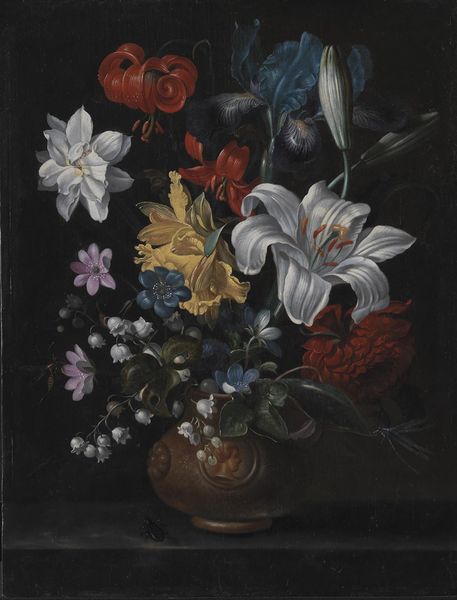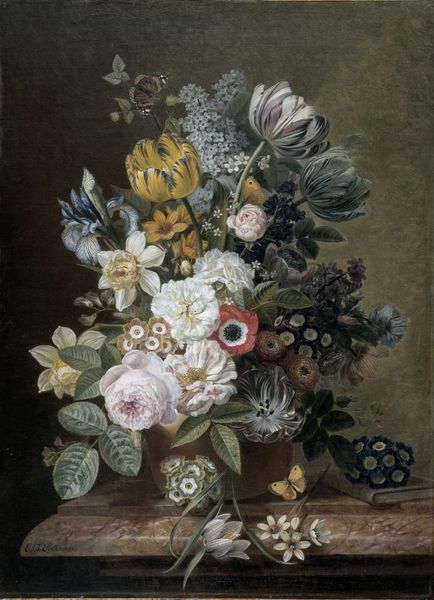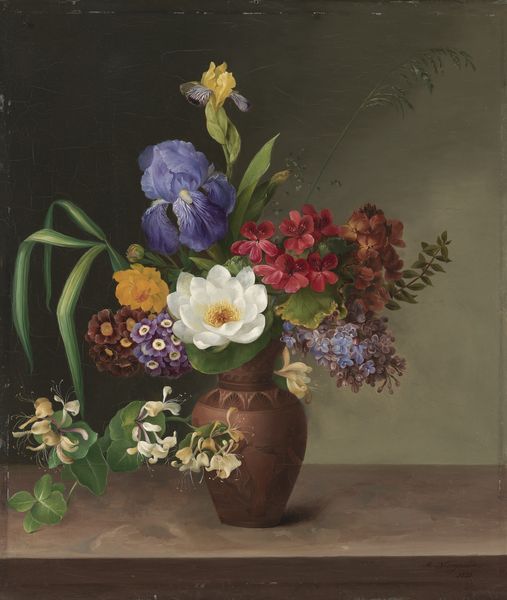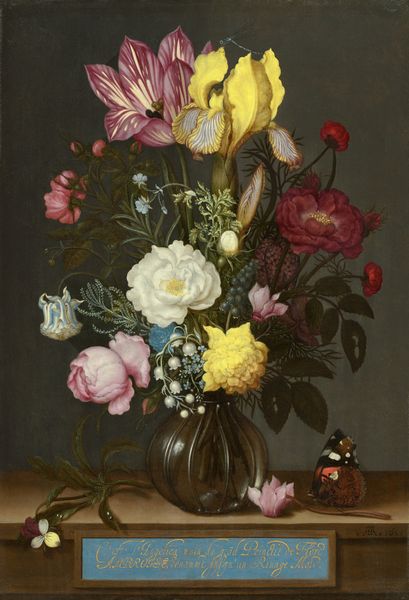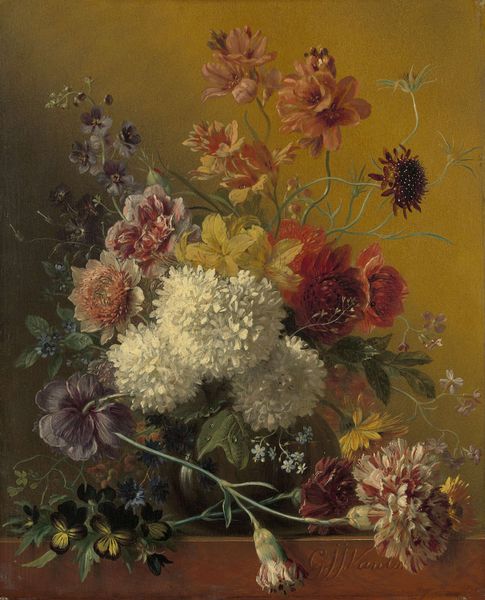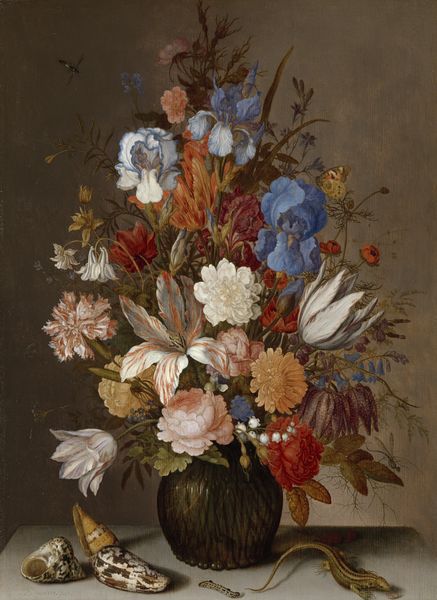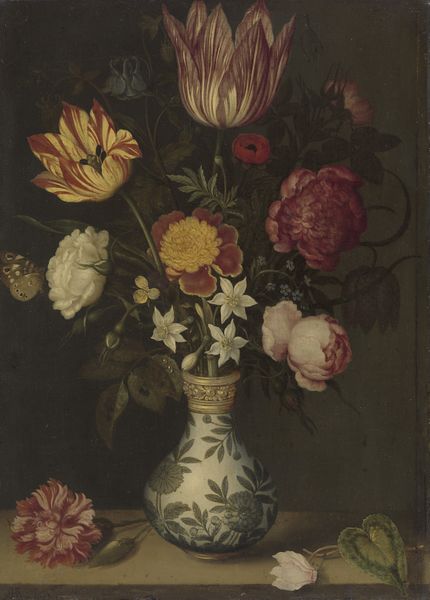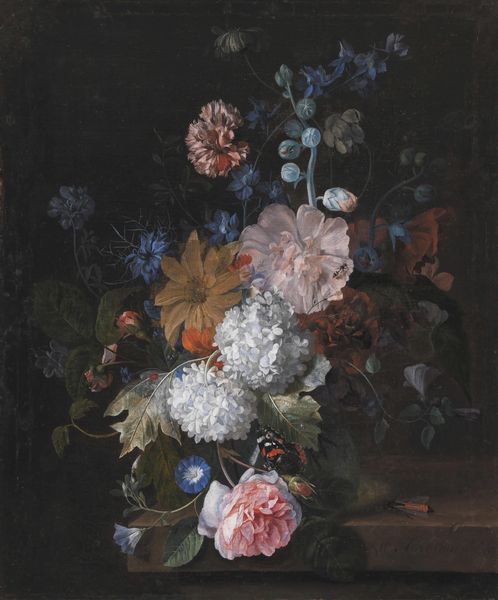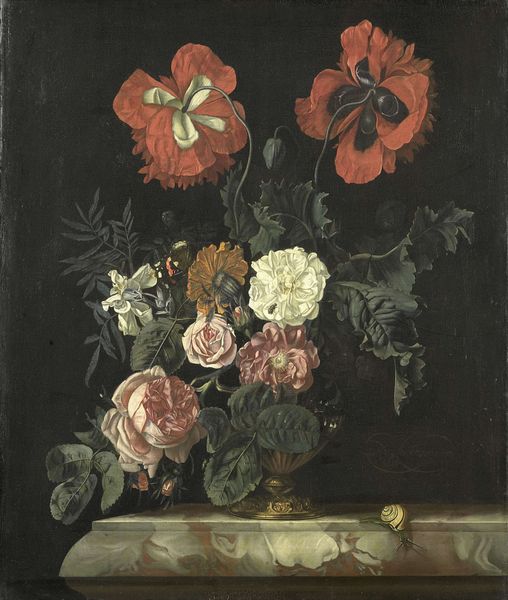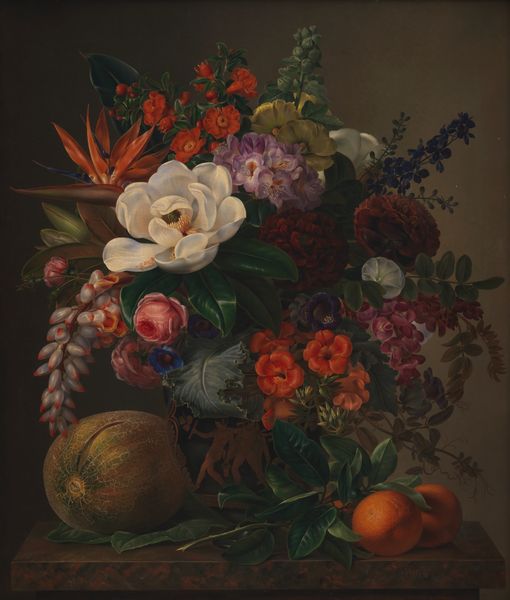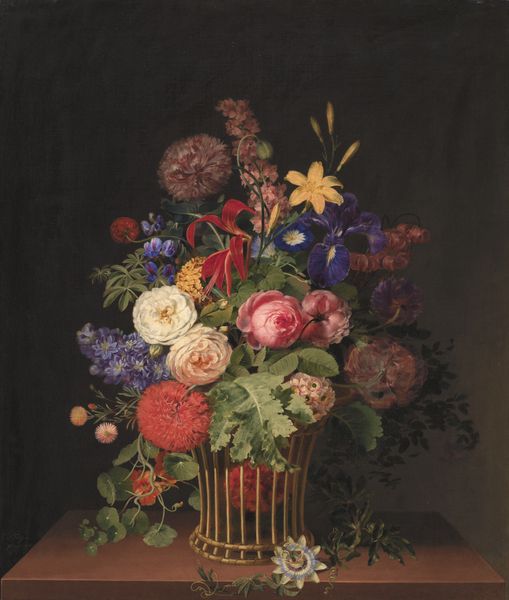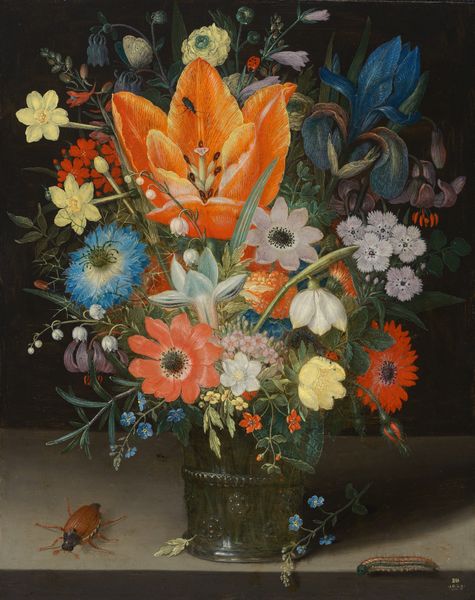
painting, gouache, oil-paint, paper
#
painting
#
gouache
#
oil-paint
#
paper
#
oil painting
#
watercolour illustration
#
watercolor
Dimensions: 480 mm (height) x 410 mm (width) (bladmaal)
Curator: Here we have Magdalene Margrethe Bären's "Vase med blomster," believed to have been created between 1752 and 1807. It's quite an impressive floral still life rendered in oil paint and gouache on paper. Editor: It's very... restrained, isn’t it? There’s an elegance in the muted palette, the way the dark background almost swallows the arrangement. It feels almost mournful, despite the vibrancy of the individual blooms. Curator: The artist clearly prioritizes the formal arrangement. Note the strategic placement of each bloom— the precise tilt of the sunflowers against the weight of the darker peony at the bottom, how their positioning creates visual interest. Editor: And that interest exists in relation to the historical perception of flowers themselves, right? During Bären's lifetime, floral arrangements became markers of class, coded languages of courting and status. To me, this piece hints at those constraints and coded messages, the subversion of gender norms and unspoken societal expectation through nature. Curator: A potent reading. It's undeniably true that floral paintings during this period often spoke to wider social contexts, especially considering women’s often constrained roles, both literally and figuratively ‘put in a vase’. It is also a rather exquisite, masterly handled combination of gouache and oil. The artist’s employment of various flowers lends considerable textural depth, with dynamic surface modulation across each flower. Editor: The darker tones do provide a distinct background that enhances the various colours and shapes of the flowers in the arrangement. Also, if we delve deeper, can we assume something deeper about gender by understanding the choice of the flower itself in that particular order? What do these various colours imply about the period's concept of life and existence in a time with strict moral expectations? Curator: What is particularly compelling about Bären's work, if you allow me, is its technical expertise. The blending is seamless, the contrast controlled, creating depth but a certain unified harmony. Editor: Yes, and while the precise meanings woven into Bären's choices may remain partially hidden from a modern audience, they nonetheless echo through the work. A woman finding voice through a seemingly passive art form, her expression carefully blossoming on the canvas, offering itself for dialogue. Curator: An expressive flower that speaks volumes. Editor: Indeed, I find myself wondering which bloom might carry her secret signature, and what hidden message does that communicate to viewers across the ages.
Comments
No comments
Be the first to comment and join the conversation on the ultimate creative platform.
